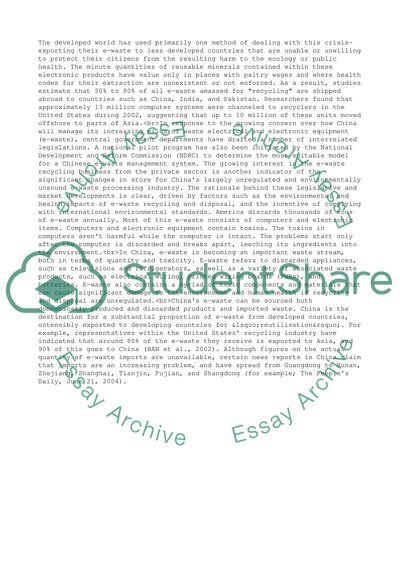Cite this document
(“E-waste Dumping - A Challenging Legal and Ethical Choice in Global Essay”, n.d.)
E-waste Dumping - A Challenging Legal and Ethical Choice in Global Essay. Retrieved from https://studentshare.org/business/1520839-e-waste-dumping-a-challenging-legal-and-ethical-choice-in-global-business
E-waste Dumping - A Challenging Legal and Ethical Choice in Global Essay. Retrieved from https://studentshare.org/business/1520839-e-waste-dumping-a-challenging-legal-and-ethical-choice-in-global-business
(E-Waste Dumping - A Challenging Legal and Ethical Choice in Global Essay)
E-Waste Dumping - A Challenging Legal and Ethical Choice in Global Essay. https://studentshare.org/business/1520839-e-waste-dumping-a-challenging-legal-and-ethical-choice-in-global-business.
E-Waste Dumping - A Challenging Legal and Ethical Choice in Global Essay. https://studentshare.org/business/1520839-e-waste-dumping-a-challenging-legal-and-ethical-choice-in-global-business.
“E-Waste Dumping - A Challenging Legal and Ethical Choice in Global Essay”, n.d. https://studentshare.org/business/1520839-e-waste-dumping-a-challenging-legal-and-ethical-choice-in-global-business.


